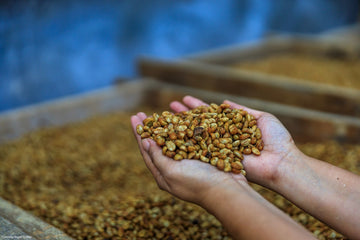Coffee Cupping and Tasting Tips
"I don't taste all that stuff in coffee that you guys do. I just know what I like."
I can't tell you how many times I have heard that, or something like it. In fact, there was a time when I said that very thing myself. I was of the opinion that people that taste "blueberry with a hint of lemon zest" in coffee were either more sophisticated than me or just plain full of malarky. But I've learned that the confusion over what people taste comes down to 2 things:
1. A basic understanding of the limitations of language in regards to describing what we taste. So it's important that we're all speaking the same language when it comes to talking about coffee.
2. Your palate (what we call your ability to taste flavors and detect attributes) can be trained and developed with practice just like a muscle. The more you taste and actively analyze coffee, the better you get at it!
Coffee Tasting & Cupping Terminology
Let's start by making sure we're all on the same page and define some common coffee terms:
Dry aroma - the smell of the dry, ground coffee. This is helpful because you taste what you smell. Smell and taste are VERY closely linked. Also sometimes called "fragrance".
Wet aroma - the smell of the brewed coffee. Also sometimes called the "nose". As in "I get lots of florals in the nose, but not in the cup".
Acidity - Often referred to as "brightness", acidity has little to do with pH level in the context of tasting coffee. I like to think of it more like really sharp citrus flavors like lemon zest. Useful words for describing coffee with high acidity are zesty, tangy, lively or vibrant. For example, fully washed African coffees are commonly very bright. The opposite of acidic would be referred to as soft, muted or flat. It's not necessarily a bad quality if it's what you want out of the cup! Wet-hulled Indonesian coffees are commonly very low acidity.
Balance - How do all the different flavor elements in the coffee balance against each other? Do the flavors compliment each other or do they clash? Another way to think of balance is by noticing how difficult they are to distinguish. If the flavors are very distinctive and isolated, that would be complexity which is the opposite of balance. Like when you beat eggs to scramble, you want the yellow and white completely blended as much as possible rather than clearly distinguishable white and yellow spots. That would be visible balance. Again, complexity is not necessarily an undesirable trait, it's all about what you want out of the cup.
Body - Used to describe fullness or richness of the cup. Is the cup weighty and thick or thin and tea-like?
Texture - otherwise known as "mouthfeel", this attribute is commonly associated with and closely linked to body. You could easily put them together, but when observed separately it's meant to be a second descriptor to add nuance and describes how the coffee feels on the tongue. Common words to describe texture are velvety, syrupy and creamy. On the opposite end of the spectrum you get silky on down to delicate and even watery. Think of the difference between whole milk and 2% milk as two ends of this spectrum.
Sweetness - For folks new to drinking coffee black, sweetness can be difficult to perceive in more subtle cases, but most all specialty grade coffees will have some measure of sweetness. On the most sweet end, you'll find natural processed coffees and "fruit bombs". Common words here are intense and juicy. Mild and moderate sweetness are more common with most fully washed coffees, though certain fermentation methods can significantly increase the perceived sweetness.
Finish - Sometimes referred to as "cleanliness" this attribute is most easily detected in the aftertaste. Some coffees linger in your mouth for a very long time after you swallow (long finish) while others disappear the moment you swallow (quick finish). If a finish is quick and clean, we'll refer to that as a clean cup. The finish is also where you're most likely to detect earthy flavors. This can be desirable or undesirable. Sometimes a finish is lingering and pleasant! Other times it can be earthy to the point of being dirty.
How to Cup Coffee
Now that we know how to talk about coffee, let's talk about cupping. Cupping is the coffee industry's standard protocol for brewing coffee for analysis. Why? It removes as many variables from brewing as possible. The point is to have an across the board, apples to apples method of brewing so that your analysis of a coffee won't be influenced by the brew method. Do you have to cup in order to analyze coffee? Absolutely not. If you prefer a different method, go right ahead! Just be sure you are controlling the brew variables so that they aren't influencing the final cup. A change in grind size, water temperature, brew ratio and even pour rate can vastly change your final cup. So however you choose to brew your coffee for analysis, just make sure it's standardized and stays consistent!
The Specialty Coffee Association developed a standard for cupping that we used for many years. Feel free to check out their protocol at the link above! Over the years we've modified our cupping protocol a little here and there. Lately we've found Scott Rao's protocol to be both simple and effective. It uses a more fine grind than the SCA protocol as well as a slightly stronger 17:1 brew ratio. Here is our current method simplified:
1. Grind a 10 gram sample of coffee at medium-fine grind (15-16 on a Baratza grinder, on the fine side of a pour over grind). Be sure to run a gram of the coffee sample through the grinder first and discard in order to clear out the burrs.
2. Add sample to a cupping bowl or glass. Cupping bowls should be large enough to hold about 6.5 to 8 oz of liquid with a wide enough opening to accommodate a spoon being dipped in without needing to be tipped.
3. Add 170mL (or grams) of 200F water. Brew for 4 mins.
4. Break grinds crust with a spoon and note wet aroma. Use spoon to clear off the any remaining crust from the top of the cup. Use the spoon to drink a few sips of sample, taking care to slurp vigorously. This allows the liquid to fully coat your tongue.
5. Allow the coffee to cool to room temperature, then sample again. The flavors can become easier to distinguish as the coffee cools.
Great, now you're cupping coffee! But remember that one of the most important tools for a roaster is keeping notes or roast logging. It's the same for cupping...
Taking Notes
As with cupping or analyzing coffee, how you take notes is less important than actually taking them. Again, the SCA has a standardized analysis form which you can use, but we find it's overly complex for what we need. It also results in a score where a coffee will lose points for complexity or for having muted acidity, which some coffee roasters might find attractive in their desired cup. We just want to help people find the coffee they're looking for, so a score that penalizes certain attributes folks might be looking for is misleading.
So we developed our own coffee analysis form!

And here's an example of how we use that analysis:

You'll note we also use a "Dominant Flavor" chart in order to tell a little more about the cup at a glance. This in conjunction with Flavor Notes will give us a more complete story than simple flavor notes. For instance, you might say a coffee has notes of orange and chocolate. But maybe the chocolate is the more dominant flavor in the cup and the orange is just a small note. To chart that I might note a "1" in the citrus column and a "4" in the chocolate column.
Now there are limitations to the Dominant Flavor chart, so a little intuition is necessary for it to be useful. For instance, there are lots of sugary, caramel like flavors such as cane syrup, maple syrup, molasses and brown sugar just to name a few. So the "Caramel" bar is meant to show how dominant that category of flavor is and exactly which of those flavors we detected would be found in the Flavor Notes.
So maybe it's not that much less complicated than the SCA's cupping form. But hey, it works for us! And the important thing is that whether you use our form, the SCA's form or develop something of your own, it just needs be helpful to you.
If you'd like to hear more about tasting coffee and developing your palate, here's a video from our archives hosted by Captain Ben that you might find helpful!
Can't see the video? Watch it on YouTube.








